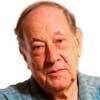The voice over the telephone was laden with grief: "Horacio’s died."
No, not Horacio Méndez Carreras. Not Horacio, Jockey Club fencing champion and collector of toy soldiers. The lecturer on Napoleon, the historian who treasures old books, the man who would’ve loved to have been Byron. Not Horacio Méndez Carreras, that tireless human rights campaigner. The man who took his mother to march with Madres de Plaza de Mayo, the lawyer who played a key role in bringing the murderers and torturers of the ESMA death camp to justice. That irrepressible lawyer who indefatigably traced the fated lives of two French nuns thrown from a military transport plane into the Atlantic.
Not Horacio Méndez Carreras. No, Horacio Méndez Carreras is not dead. He will live on. And he is alive, truly alive, thanks to a voluminous video-taped series of interviews he gave just a few months ago. Just go to YouTube, type in ‘PatrimonioBA’ and his illustrious name and you will see how alive he is. And then listen to his testimony.
The interviews were for a City Hall entity, ‘PatrimonioBA.’ It does what the name suggests, it protects the patrimony of one of the world's great cities. I often think Buenos Aires is, in fact, a city of cities: its overall architecture has been stitched together with a bit of everything. There’s a bit of Paris, obviously; London, clearly, in the city's railway heritage; Rome, yes, but not so obviously; Turin, perhaps; even Boston. There is always room for more. But it’s when we get to the human patrimony of Buenos Aires that we have something special.
Interviews with the city's citizens provide living histories. Those with Horacio are stupendous. Here he is, so young at 86, telling the story of his incredible life. He was enthralled with his work as a "camp lawyer" when he was very young, taking on all kinds of cases, following in his eminent father's footsteps, but never seeking highfalutin jobs or partnerships at prestigious law firms. He just loved the law and wanted to see justice hold sway.
It was those values that came to the fore in those dark days of the late 1970s and saw us cross paths. It was only natural that Horacio found himself, with a partner, writing a column about human rights for the Buenos Aires Herald. But this was during the dictatorship, mind you, when even the mention of human rights risked a bullet or a disappearance.
With the return to democracy, of a sort, Horacio set about bringing the murderers and torturers of the ESMA death camp to justice. He was engaged by the French government to trace their citizens who had vanished and build a case against the kidnappers and killers of Alice Domon and Léonie Duquet, two French nuns who had vanished.
They were known to have been disappeared in the Atlantic, after being bundled from a transport plane. Their bodies eventually showed up on the beach. Méndez Carreras not only helped to find their remains, he also managed to identify notorious naval officer Alfredo Astiz as one of the perpetrators. The so-called ‘Angel of Death’ served in the ESMA death squad that seized the nuns and the leaders of the Madres de Plaza de Mayo in one fell swoop.
Horacio and I shared the honour of being marked for assassination and we experienced similar encounters with Admiral Emilio Massera, the most evil of the bunch of thugs that took over on March 24, 1976, and plunged Argentina into horror.
Horacio witnessed so much. Some of his experiences were as hilarious as they were chilling, but he did much more than bear witness. He is a man who helped make Argentina a better place, giving his heart and soul to the task of upholding dignity and decency in inglorious times.
Horacio Méndez Carreras, 1937-2024. Thank you. QEPD.




















Comments